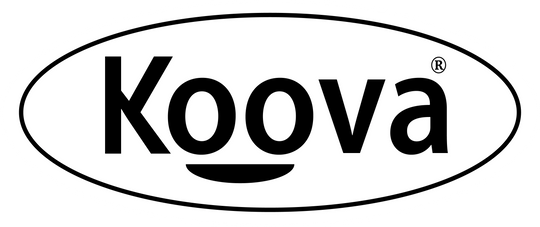Frequently Asked Questions
1. What is the significance of maintenance in an organization?
2. What are the benefits of regular maintenance?
3. What types of maintenance should an organization consider?
4. How can organizations build a culture of maintenance?
5. How can technology enhance maintenance efforts in organizations?
Organizations thrive on efficiency, productivity, and effectiveness in their operations. Behind every successful organization lies a strong foundation built on continual improvement and rigorous maintenance. This article explores the significance of maintenance in any organization, focusing on how proper upkeep promotes not just functionality but also overall success. Whether your business sells toe warmers or offers professional services, understanding the importance of maintenance is crucial for your longevity and growth.
Understanding Maintenance in an Organizational Context
Maintenance refers to the actions taken to keep systems, processes, and infrastructures operating effectively. In an organizational setting, this encompasses everything from regular upkeep of physical spaces to enhancements in technology, human resources, and workflows. With effective maintenance strategies, organizations can boost productivity, enhance employee satisfaction, and ensure customer loyalty.
The Benefits of Regular Maintenance
Implementing a maintenance plan is not simply a matter of checking off boxes. Instead, it provides a wide range of benefits that can propel your organization forward. Here are some of the key advantages:
- Increased Efficiency: Routine maintenance helps to streamline processes, eliminating bottlenecks that slow down productivity. This efficiency translates to quicker response times to customer needs and higher throughput in operations.
- Cost Savings: Proactive maintenance often leads to cost savings over time. Avoiding unexpected breakdowns reduces repair costs and prevents disruption in operations. For businesses like those selling toe warmers, having an efficient supply chain minimizes delays and enhances customer satisfaction.
- Enhanced Safety: Frequent inspections and updates reduce workplace hazards, creating a safer environment for employees. This not only boosts morale but also protects the organization from potential liabilities.
- Improved Employee Satisfaction: A well-maintained workplace leads to happier employees. When tools, resources, and environments are kept in optimal condition, staff can perform at their best without facing frustrations due to malfunctioning equipment.
- Brand Reputation: Consistently maintaining high standards in operations contributes to a positive brand image. Customers are more likely to trust and engage with organizations that demonstrate reliability and quality.
The Types of Maintenance You Need
Every organization is unique, which means maintenance strategies should be tailored to fit specific needs. Here are some common types of maintenance you might consider:
Preventive Maintenance
Preventive maintenance involves regularly scheduled inspections and upkeep to prevent issues before they arise. This might include tasks like routine machine check-ups or software updates. For a company selling toe warmers, regular inventory checks and supply management ensure that products are always available and in good condition for customers.
Corrective Maintenance
Corrective maintenance occurs when something goes wrong. This often involves repairing or replacing broken equipment or systems. Rapid corrective actions prevent lengthy downtimes and demonstrate to customers that the organization values their time and trust.
Predictive Maintenance
With predictive maintenance, organizations use data analytics and sensors to predict when equipment may fail. This anticipatory approach allows for necessary repairs or replacements before issues arise, minimizing downtime and ensuring operational continuity.
Routine Maintenance
Routine maintenance includes daily or regular tasks intended to keep the workplace clean and organized. This may involve tasks like cleaning equipment, organizing spaces, or ensuring compliance with health and safety regulations. A clean environment is essential for maintaining employee productivity and efficiency.
Building a Maintenance Culture
Creating a culture of maintenance within your organization is crucial. This involves encouraging employees to take ownership of their workspaces and fostering a proactive attitude toward maintenance. Here are some strategies to help build this culture:
Educate Employees
Training your employees on the importance of maintenance is vital. They should be aware of how their efforts contribute to the overall success of the organization. Consider workshops or training sessions that cover the benefits of maintenance and how their roles impact operational efficacy.
Establish Clear Procedures
Having well-defined maintenance procedures ensures that everyone knows their responsibilities. This includes detailing steps for reporting issues and understanding when and how maintenance tasks should be performed. Creating checklists and guides can make these procedures easily accessible.
Promote Accountability
Encourage employees to take responsibility for maintaining their workspaces. Implement systems for tracking maintenance tasks, scheduling checkups, and documenting completed work. When everyone feels accountable for their environment, the organization is more likely to thrive.
Leveraging Technology for Effective Maintenance
Today’s technological advancements provide ample opportunities to maintain organizational operations effectively. Here are a few tech solutions that can bolster your maintenance efforts:
Maintenance Management Software
Investing in maintenance management software can significantly enhance your maintenance strategy. These platforms help track maintenance schedules, manage work orders, and analyze performance data. They provide organizations with the insights needed to make informed decisions about future maintenance needs.
Data Analytics
Using data analytics can help organizations optimize their maintenance schedules. Analyzing usage patterns and performance metrics reveals areas where improvements are necessary. Predictive analysis tools can also forecast potential failures, allowing proactive measures to be taken.
Automated Alerts
Automated alerts can ensure that nothing falls through the cracks. Setting up notifications for scheduled maintenance or issues that need attention keeps teams informed and accountable, leading to a more organized and efficient workspace.
Measuring Your Maintenance Success
Like any organizational strategy, measuring the success of your maintenance efforts is essential. This insight helps you identify areas for improvement and reinforces the value of maintenance in your operations. Here are some key performance indicators to consider:
Downtime Metrics
Track the amount of downtime caused by equipment failure or delayed maintenance. Keeping an eye on these metrics allows you to minimize disruptions to your workflow and improve overall efficiency.
Cost Analysis
Analyze the costs associated with maintenance, including both preventive and corrective measures. By understanding your spending, you can determine the return on investment for your maintenance efforts and make adjustments where necessary.
Employee Feedback
Gather feedback from employees regarding the state of their work environments. If they feel that maintenance efforts are successful, their productivity and satisfaction will reflect positively on the organization.
Final Thoughts: Elevate Your Organization Through Maintenance
In the fast-paced world of business, organizations often overlook the importance of maintenance until it’s too late. Investing time and resources into maintenance practices ensures long-term success, boosts employee morale, and fosters customer loyalty. So, take proactive steps to integrate a strong maintenance culture into your organization today! For those in the retail sector, like businesses that sell toe warmers, consistent upkeep can elevate customer experiences and solidify your position in the market. Remember, in the realm of business, maintenance is not just an option; it’s a necessity. Let’s gear up for a brighter, more organized future!


